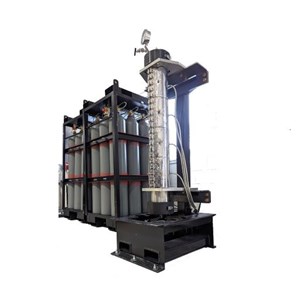News
FuelPositive progresses on its gaseous H2 to green ammonia converter
FuelPositive initiated system testing of its on-farm, containerized green ammonia production system to test its resilience to extreme outdoor weather conditions in anticipation of deployment in Manitoba, Canada.
Currently, the system components have been operating extremely well under winter conditions. The system is climate controlled and designed to be fully operational between -50 C and +45 C.
“FuelPositive has successfully built our containerized modules as fully climatized systems, capable of working in extreme temperatures, ranging from minus 50 C to plus 45 C. The units are temperature controlled and built to the strictest hazardous area classifications with redundant monitoring. Our systems are engineered to run without any operator intervention or operator input,” said Nelson Leite, COO, Fuel Positive.
Green ammonia converter readiness
FuelPositive reports further progress with its proprietary and specialty green ammonia converters, as they are being in-house tested for independent third-party validation. The converters play a major role in the company’s systems unique ability to convert input gasses of H2 and nitrogen into green ammonia in a safe, reliable and highly efficient manner.
“The converters life cycle is expected to be approximately 30 years and each converter perform at rates that make our system extremely efficient. Our modular design ensures that our green ammonia production process operates safely and effectively when dealing with off-grid power fluctuations and peak power versus off-peak power utilization, in real time,” stated Nelson Leite. “The FP300 is the first of its kind in the world and is the culmination of the creativity and engineering skill of many minds. We have assembled a brilliant team that is making a serious impact on this groundbreaking technology every day.”
“We continue to run final testing on our various ultra-high purity gases with week-after-week of successful testing, in extreme conditions, at our facility in Waterloo. I am very pleased with our progress as all tests have met or exceeded our expectations so far,” said Francisco Mora, Lead Chemical Engineer, in charge of the testing. “We have built our manufacturing and lab from scratch and it’s great to be a part of a company pioneering this important sustainable technology.”


